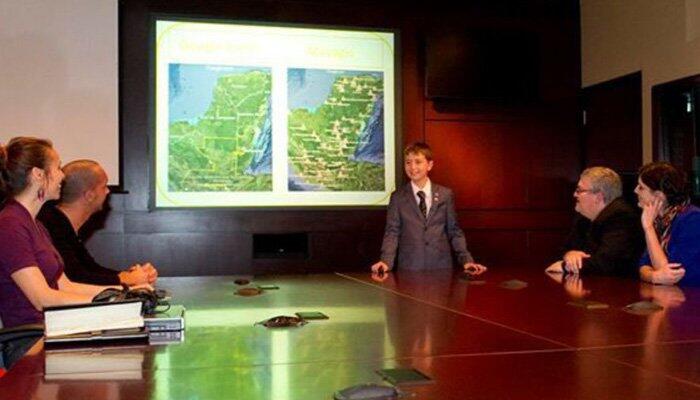William Gadoury, a 15-year-old school student from Quebec, Canada, has found something that’s been hidden from archaeologists for centuries using satellite photos and Mayan astronomy.
He came up with the theory that the Maya civilization chose the location of its towns and cities according to its star constellations. The city is buried deep in the Yucatan jungle of southeastern Mexico. He found Mayan cities lined up exactly with stars in the civilization’s major constellations.
When studying the star map, he discovered one city was missing from a constellation of three stars.
Using satellite images provided by the Canadian Space Agency and then mapped on to Google Earth, he discovered the city where the third star of the constellation suggested it would be. The satellite scans of the area from the RADARSAT-2 satellite found linear features which “stuck out”.
“I did not understand why the Maya built their cities away from rivers, on marginal lands and in the mountains,” William said to the reporters.
“They had to have another reason, and as they worshiped the stars, the idea came to me to verify my hypothesis. I was really surprised and excited when I realised that the most brilliant stars of the constellations matched the largest Maya cities.”
William has named the city that no man has stepped yet in the Yucatan jungle K’aak Chi, or Mouth of Fire.
Gadoury had been studying 22 Maya constellations for years before releasing that he could line up the positions of 117 Maya cities on the ground with maps of stars and constellations above – something that no one had pieced together before.
Unfortunately, the city is located in a very difficult place for the boy to visit, it’s right in the heart of the jungle, in the inaccessible and remote region of Mexico’s southern Yucatán Peninsula.
Dr Armand La Rocque, of the Remote Sensing Laboratory at the University of New Brunswick, said one image showed a street network and a large square which could possibly be a pyramid.He stated: “A square is not natural, it is mostly artificial and can hardly be attributed to natural phenomena… If we add these together, we have a lot of indication there might be a Mayan city in the area.”
Further analyses from satellites belonging to NASA and the Japanese Space Agency revealed what looks like a pyramid and 30 buildings at the location mapped by the star, Yucatan Expat Life reports.
William’s discovery will be published in a scientific journal and he will present his findings at Brazil’s International Science fair in 2017.












